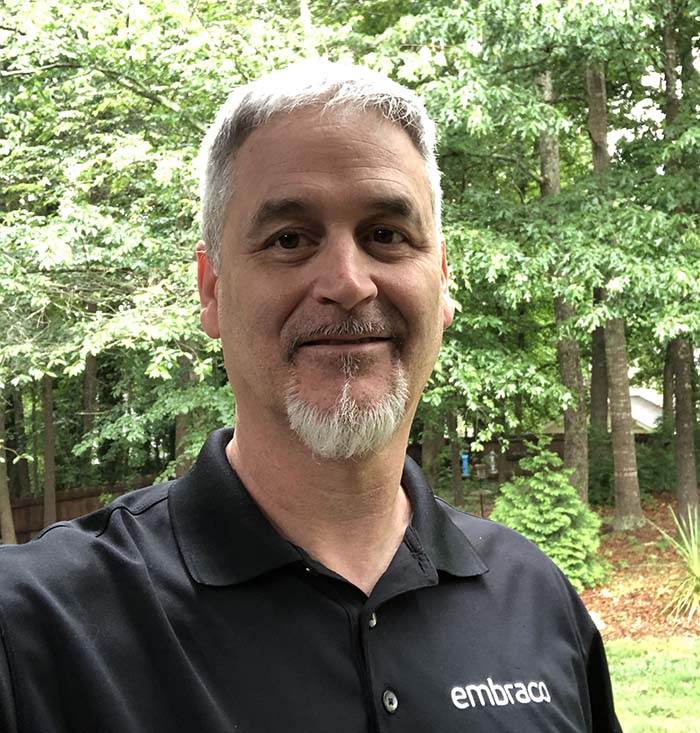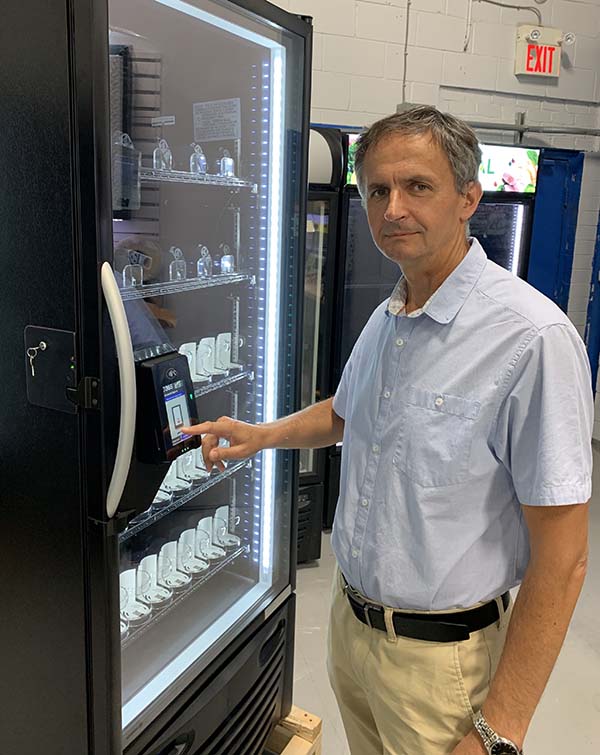There has been a lot of discussion lately regarding the use of mildly flammable (A2L) refrigerants such as R-32 and R-454B in comfort cooling applications. These types of refrigerants are not permissible for use in commercial refrigeration equipment, but the flammable refrigerant, R-290 (propane), is allowed in small amounts (currently less than 150 grams in North America) and is widely used in many supermarkets, convenience stores, and restaurants.
Because R-290 is a flammable (A3) refrigerant, there are certain safety protocols that technicians must follow when servicing and repairing these refrigeration units. Some of these protocols are outlined below, but it is highly recommended that technicians receive specialized training before working on any equipment that utilizes flammable refrigerants.
Safety First
In terms of regular maintenance required, there is virtually no difference between units that use flammable versus non-flammable refrigerants, said Marinko Tepic, P. Eng., vice president of engineering at Minus Forty. Regular maintenance for both types of equipment usually consists of cleaning the cabinet interior, exterior, and condenser at regular intervals (as recommended by the OEM), he said, and periodically cleaning the evaporator coils, depending on the cleanliness of the environment.

SITE SURVEY: Denny Martin from Nidec Global Appliance (Embraco brand) recommends that technicians perform a site survey before starting any service on an R-290 unit in order to look for any potential ignition sources.
As far as service on an R-290 unit is concerned — which refers to making repairs to any part of the electrical system or accessing the hermetically sealed system — Tepic said technicians must always turn on a combustible gas detector when entering the service area and make sure equipment power cords are unplugged or disconnected safely, as sparks from unplugging or power disconnects could ignite flammable refrigerants. Service must also be performed in a well-ventilated area, especially if the refrigerant hermetic system is being accessed.
“In addition, a Danger Propane safety placard should be applied in a visible spot near the service area to alert others that work is in progress and no smoking or open flames are permitted,” he said. “Instruct everyone in the immediate area as to the nature of the work and safety precautions, and always have an approved fire extinguisher readily available in the vicinity.”
It is good practice for technicians to perform a site survey before starting any service on an R-290 unit, in order to look for any potential ignition sources such as light switches or kitchen equipment with pilot lights, said Denny Martin, technical support and product manager for distribution and aftermarket at Nidec Global Appliance/Embraco North America.
“Take extra care on the side of safety and ventilate the site with a hydrocarbon (HC) gas-approved fan,” he said. “Before running the fan, place a hydrocarbon gas detector in the lowest part of the work site to check for any HC gas leaks. Leave it on during the entire service to monitor for HC gas accumulation, as hydrocarbons have no odorant. Remember to start the fan after the initial HC gas check. Ventilation and the detector are key to avoid buildup of a flammable mix during service.”
Tools and Components
Most of the regular tools used for servicing equipment using non-flammable refrigerants can also be used for units that use flammable refrigerants, said Tepic, including pressure gauges and manifold set, pinch-off tools, tube cutters, oxygen-free dry nitrogen, vacuum pumps, torches, and soap solution. The specialized tools required to service R-290 systems include:
- An electronic gas detector specifically designed for combustible gases, as traditional halide leak detectors cannot be used as they can produce sparks;
- One-foot long, low-loss charging hose;
- Danger Propane safety placard;
- Approved fire extinguisher; and
- If needed, a recovery pump specifically designed for use with flammable refrigerants; however, there are other ways to safely remove R-290 refrigerant from the system without requiring a specialized recovery device.
It is also important to use a hydrocarbon gas-approved fan and to make sure that the gauges are properly cleaned between uses, said John Prall, technical support engineer for commercial refrigeration at Nidec Global Appliance/Embraco North America. He also recommends using a dedicated HC manifold to avoid potential refrigerant contamination.

SIMILAR COMPONENTS: According to John Prall from Nidec Global Appliance (Embraco brand), the components found in an R-290 system are similar to those found in traditional types of systems but with some important differences.
As for the components found in an R-290 system, they are similar to those found in traditional types of systems but with some important differences. For example, the electrical components such as the fan motors, overloads, and start device are sealed in order to prevent them from igniting R-290 in case of a refrigerant leak in accordance to the IEC 60079-15 standards, said Prall.
“The compressors are specifically designed to have the optimal displacement and motor size for R-290, and when replacing the compressor, another R-290 compressor must always be used,” he said. “The metering devices and heat exchangers are also sized to maximize the performance of the R-290 refrigerants in the systems.”
As for operating pressures, they are very similar to older R-22 systems, said Prall, which means they are higher than R-134a systems and lower than R-404A systems. R-290 is also miscible with all conventional refrigeration oils, he said, and most commonly used with POE oil, and in some cases, alkylbenzene.
Recovery and Charging
While most non-flammable refrigerants, such as R-404A, must be recovered, R-290 may be vented to the atmosphere under certain circumstances, or else recovered with a machine designed to handle flammable refrigerants. According to Tepic, there are essentially three methods that can be used to safely remove flammable refrigerant from a hermetically sealed system.
Method A involves venting R-290 (or R-600a) directly outdoors. EPA and Environment Canada have exempted these refrigerants from venting prohibitions; therefore, both can be vented into the atmosphere where safety is not compromised, said Tepic. When venting outdoors, service technicians must:
- Ensure there are no ignition sources within a 10-foot perimeter of the discharge point;
- Make everyone in the immediate area aware of the venting of flammable gas to the atmosphere;
- Ensure all local legislation/regulations concerning the safety of hazardous or flammable substances are complied with;
- Ensure venting is not done into a low-lying area, as R-290 and R-600a are heavier than air and can accumulate and stay there for a prolonged time;
- Ensure venting is not done inside a building or a public area under any circumstances, or where affected people are not aware of the procedure; and
- Purge the system with oxygen-free dry nitrogen for a minimum of 10 seconds after venting.
Method B involves recovering the refrigerant without the use of a specialty recovery vacuum pump — a standard recovery vacuum pump is used instead — and Tepic recommends following this procedure:
- In an outdoor environment and adhering to safety precautions in Method A, empty and evacuate a recovery cylinder into a vacuum state;
- Tap into both low- and high-pressure sides of the hermetically sealed system using piercing valves, 1-foot-long hoses, and a gauge manifold (torches or open flames must not be used to tap into the flammable refrigerant system);
- Open both manifold and cylinder valves to allow refrigerant to flow into the recovery cylinder from both sides of the system;
- Once the pressures have equalized, shut off all valves, then remove the refrigerant hose from the recovery cylinder;
- Vent the recovery cylinder outdoors adhering to the safety precautions in Method A, then purge the cylinder with oxygen-free dry nitrogen at 5 psig for at least two minutes; and
- Repeat all steps above until the system reaches into a vacuum level.
Method C involves recovering the refrigerant with the use of a specialty recovery vacuum pump, and according to Tepic, the procedure is similar to recovering non-flammable refrigerants into a recovery cylinder with the following exceptions:
- Piercing valves must be used (torches or open flames must not be used) to tap into the system, and
- A recovery pump must be a specialized type certified for use with flammable refrigerants.
When charging a unit with R-290, the procedure is the same as for other refrigerants, said Prall, except due to the very low charges of R-290, the systems are extremely sensitive to charge variations.
“For that reason, technicians must take great care to ensure the correct charge is applied to the system per the manufacturer’s specifications,” he said. “Also, be sure to use pure R-290 when recharging a system.”
Tepic added that while the same charging procedure is used for flammable refrigerants as with non-flammable refrigerants, there are a few important considerations:
- Refrigerant hoses must be as short as possible, no longer than 1 foot, as flammable refrigerants charges are low in mass and critical;
- Process lines must be crimped at two places with pinch-off tools and thoroughly leak tested using a flammable gas detector after brazing is completed;
- The use of piercing valves is just temporary for servicing purposes only, those must be removed and the system must be hermetically sealed after charging; and
- Red sleeves (indicators of the use of flammable refrigerant) must be replaced on process lines after servicing.
To leak check an R-290 system, Prall recommends using an HC detector; however, he said that soap bubbles can be used in conjunction with HC detectors.
Replacing Compressors
Like all refrigeration systems, the compressor in an R-290 system may need to be replaced at some point, and when that occurs, there will be differences in how that should be accomplished.

EXPERIENCED PERSONNEL: Marinko Tepic, PE, from Minus Forty notes that servicing R-290 equipment in the field is quite common as more experienced service personnel are becoming available.
“When replacing a compressor, the major differences between R-290 and traditional systems are 1) after evacuating the system, it’s important to cut out the compressor and/or components instead of unsoldering it; and 2) always make sure that the R-290 has been removed from the high- and low-side of the system by evacuating from both sides and doing a nitrogen purge before applying a flame to the system,” said Prall. “As an alternative, you can use a lock ring type flameless system.”
When replacing a compressor in an R-290 unit, technicians must take the necessary safety precautions in order to mitigate the associated hazards of fire and explosion related to flammable refrigerants, said Tepic.
“Soldering is not allowed on flammable-refrigerant sealed systems due to low melt temperatures of soldering materials,” he said. “Brazing is allowed only after the flammable refrigerant is recovered from the system and for subsequent sealing after process lines are double crimped and tested for leaks with a flammable gas detector.”
Initially, there were concerns with accessing hermetically sealed systems with flammable refrigerants due to technicians’ lack of specialized training and experience in dealing with those refrigerants, said Tepic.
“Nowadays, servicing such equipment in the field is quite common, since more qualified and experienced service personnel are becoming readily available,” he said.



Report Abusive Comment